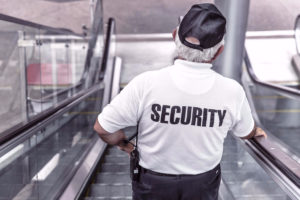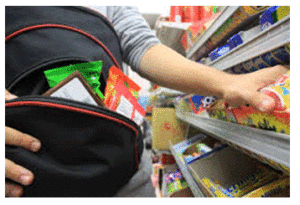 Accidents can be costly to businesses. In fact, according to the OSHA website, “It has been estimated that employers pay almost $1 billion dollars a week for direct workers’ compensation costs alone. Direct costs include workers’ compensation payments, medical expenses and costs for legal services.”
Accidents can be costly to businesses. In fact, according to the OSHA website, “It has been estimated that employers pay almost $1 billion dollars a week for direct workers’ compensation costs alone. Direct costs include workers’ compensation payments, medical expenses and costs for legal services.”
This does not take into consideration expenditures on general liability claims made by customers against businesses for accidents. The impact of a customer claim can be significant as well and according to thehartford.com “The Hartford Reports: More Than 40% Of Small Businesses Will Experience A Claim In The Next 10 Years,” March 30, 2015, the average cost of a customer injury or damage claim is $30,000 while a customer slip and fall incident is $20,000. A struck by object claim not identified as being specific to a customer or employee is listed at an average cost of $10,000. Consider then that the risk of these accidents taking place during the winter months increases significantly. What steps can you take to reduce the possibility you may have to pay out on a claim, especially during the winter months?
Slips and Falls
Slips and falls are not uncommon all year round, however, winter increases the chances of a slip on icy sidewalks and parking lots. Additionally, people will track ice and snow into the building leaving puddles of water that contribute to slip accidents. It is necessary for store employees to be diligent in placing wet floor signs near entrances and drying those areas too. Allowing standing water to remain because “people just keep tracking it in” is not an excuse that will hold water in an accident settlement case (pun intended). It is worth investing in wet area or all weather mats for the front doors to aid in the drying of shoes as customers enter the building. Have umbrella bags available for wet umbrellas. Bure sure to have deicers and anti-icers on hand for unexpected snow and ice storms to help keep sidewalks and curbs safe for patrons and employees. Stores located in traditionally warmer climates must be even more diligent because ice and snow are not as common; finding shovels and proper equipment when that rare snow or ice storm strikes can be a difficult task. Hardware stores run out of necessary items quickly as people without the tools come in at the sudden threat of storms.
Strains and Sprains
You or one of your staff may go outside to shovel snow from your sidewalks. Be careful! Not only is there the danger of being exposed to the cold too long, there is also a chance of a strain injury resulting from the shoveling of snow and ice. In an article in webmd.com titled, “Shoveling Snow Injures Thousands Each Year,” Jan 20, 2011, by Kelli Miller, the author points out that shoveling sends on average 11,000 adults and children to the hospital each year. She continues in her article, “The American Journal of Emergency Medicine details the most common health hazards associated with shoveling snow. Snow shoveling can lead to bad backs, broken bones, head injuries and even deadly heart problems.” Carefully watch those you may send out to shovel and rotate them in and out. Look for signs of excessive stress or pain and if necessary contact a local EMS station.
Parking Lots
Ensure your employees are safe if you send them outside to collect shopping carts or clear snow from parking spaces. Have orange or yellow reflective safety vests on hand and require those working outside to wear them. Moving vehicles in a parking lot may not stop quickly enough on the icy pavement if they don’t see the employee in time. The safety vest provides additional visibility to help alert drivers. While it should go without saying make sure weather appropriate clothing such as jackets, gloves and even scarfs are available for employees to help them avoid frostbite or other cold-weather ailments.
Struck-by’s
Don’t overlook the risk of ice falling from a rooftop. Too much weight from accumulated snow and ice or a slight increase in temperatures may result in ice and snow sliding off an overhang or roof. Be sure to monitor for such hazards and take proactive measures to clear potential problems before they result in an injury.
Accidents can happen anytime but winter offers unique challenges. Be pro-active and make sure you and your managers are doing all you can to make your employees and customers safe when they visit the store to work or shop.
 It’s that time of year when all store owners and managers start to make personnel decisions. Remember those people you hired in late August, maybe in September or even as late as October or November? Remember the conversations you may have had with them discussing how this was a “seasonal” position? You may have really dangled the carrot in front of them and told them that if they worked hard and showed initiative they might be retained on your staff after the holidays. Guess what? It’s time now for you to start taking a hard look at your staff and making some decisions and that isn’t always pleasant. Now you have to evaluate those employees and consider whether you want to keep them or you may have to decide if you can afford to keep them.
It’s that time of year when all store owners and managers start to make personnel decisions. Remember those people you hired in late August, maybe in September or even as late as October or November? Remember the conversations you may have had with them discussing how this was a “seasonal” position? You may have really dangled the carrot in front of them and told them that if they worked hard and showed initiative they might be retained on your staff after the holidays. Guess what? It’s time now for you to start taking a hard look at your staff and making some decisions and that isn’t always pleasant. Now you have to evaluate those employees and consider whether you want to keep them or you may have to decide if you can afford to keep them.
 For many big retailers and the small mom and pop shop, the holidays are something to be excited about.
For many big retailers and the small mom and pop shop, the holidays are something to be excited about. Could it be that Santa Claus is not always a jolly, giving man? Oh yeah. Take a
Could it be that Santa Claus is not always a jolly, giving man? Oh yeah. Take a  The end of the holiday gift buying season ushers in the inevitable holiday gift return season. Clothes that don’t fit, ugly holiday sweaters no one really wanted, toys that were too old for a young child or too young for the older child all lead to returns, exchanges, and refunds. For those who have been in retail for any length of time, we know that many of these items will be returned without tags or a receipt and not even a gift receipt. It also means people will try to return merchandise to your store that was never even purchased there, despite what the customer in front of you says. This means it is prime time for those who engage in return fraud. There are so many people making returns that trying to separate legitimate refunds and exchanges from the fraudulent ones is difficult. There are steps you can take to minimize the number of fraudulent returns you accept.
The end of the holiday gift buying season ushers in the inevitable holiday gift return season. Clothes that don’t fit, ugly holiday sweaters no one really wanted, toys that were too old for a young child or too young for the older child all lead to returns, exchanges, and refunds. For those who have been in retail for any length of time, we know that many of these items will be returned without tags or a receipt and not even a gift receipt. It also means people will try to return merchandise to your store that was never even purchased there, despite what the customer in front of you says. This means it is prime time for those who engage in return fraud. There are so many people making returns that trying to separate legitimate refunds and exchanges from the fraudulent ones is difficult. There are steps you can take to minimize the number of fraudulent returns you accept. December is the month when retailers are focused on driving those end of the year sales. We push as much merchandise as possible out of the stockrooms to fill the floors. Empty salesfloor spaces should be “no-no’s” during this time of the year. We re-merchandise our fixtures to get gift ideas in front of our customers. We also take steps to increase impulse buys by filling check lanes with snacks, batteries, magazines, gift cards, etc. Managers should also be looking at last year sales information to plan schedules around peak times of the day in order to avoid long lines at the registers. While all of this is important it is just as important to start planning for your end of the year wrap up.
December is the month when retailers are focused on driving those end of the year sales. We push as much merchandise as possible out of the stockrooms to fill the floors. Empty salesfloor spaces should be “no-no’s” during this time of the year. We re-merchandise our fixtures to get gift ideas in front of our customers. We also take steps to increase impulse buys by filling check lanes with snacks, batteries, magazines, gift cards, etc. Managers should also be looking at last year sales information to plan schedules around peak times of the day in order to avoid long lines at the registers. While all of this is important it is just as important to start planning for your end of the year wrap up. A New Year is just around the corner and once again resolutions are going to be made and many of those will fall by the wayside. Why does that happen? Are goals too big to achieve? Sometimes we all start off with good intentions and we just get caught up in our normal routines and we can’t seem to focus on what it was we wanted to get done. There may be a manager out there who resolves that this is the year they will meet quarterly with each employee and discuss performance. They might do well the first quarter but then as the demands of the job take up more and more time something gives and it was the meetings. I recall one of my resolutions was to be more organized at work. I had a filing system, it was called my desktop and I knew where everything was at. I would make my resolution, create a filing system and you guessed it by the end of January I was back to my old habits. My intentions were good I just wouldn’t stay focused on it and made excuses.
A New Year is just around the corner and once again resolutions are going to be made and many of those will fall by the wayside. Why does that happen? Are goals too big to achieve? Sometimes we all start off with good intentions and we just get caught up in our normal routines and we can’t seem to focus on what it was we wanted to get done. There may be a manager out there who resolves that this is the year they will meet quarterly with each employee and discuss performance. They might do well the first quarter but then as the demands of the job take up more and more time something gives and it was the meetings. I recall one of my resolutions was to be more organized at work. I had a filing system, it was called my desktop and I knew where everything was at. I would make my resolution, create a filing system and you guessed it by the end of January I was back to my old habits. My intentions were good I just wouldn’t stay focused on it and made excuses.
 As a manager of a retail shop, the layout of the store is probably out of your hands and there is nothing to do about it.
As a manager of a retail shop, the layout of the store is probably out of your hands and there is nothing to do about it.